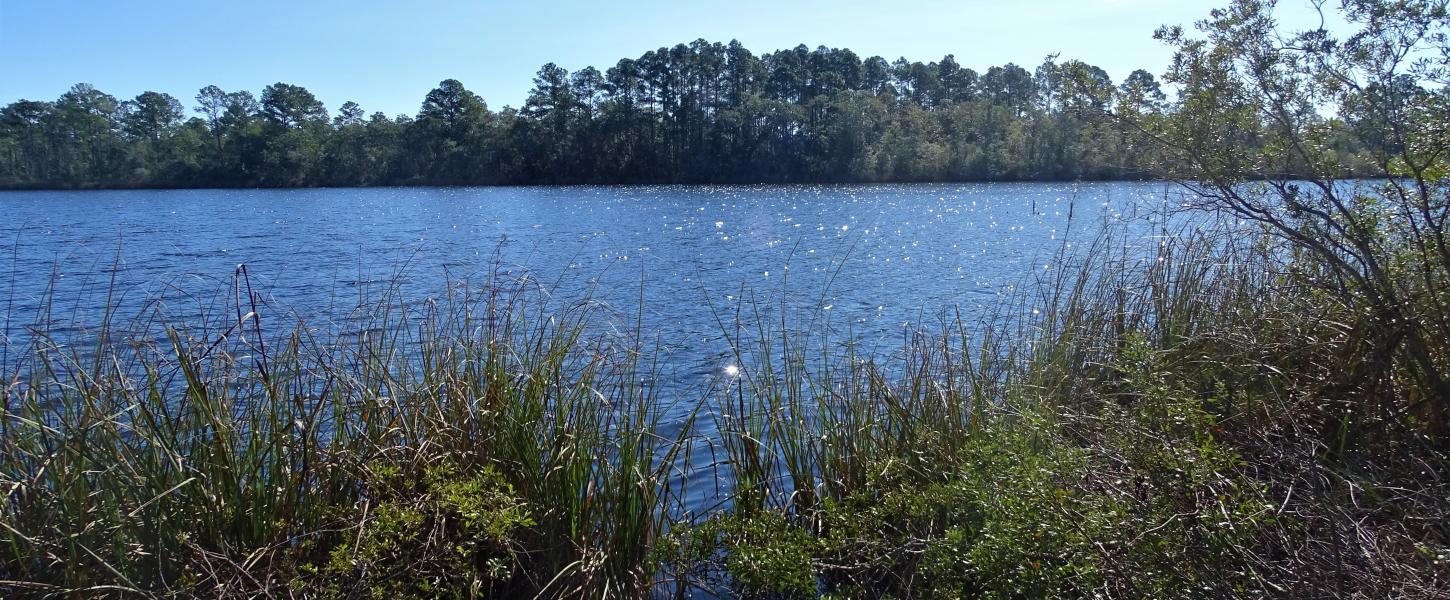Natural Community Restoration Project at the St. Teresa Tract of Bald Point State Park

Natural Community Restoration Project
St. Teresa Tract of Bald Point State Park
These lands were once as diverse as the wildlife that inhabit them. Oaks and shrubs grew into scrub habitat high up on ancient sand dunes. Towering pines and soft soils created flatwoods dotted with wetlands where water pooled. Fires periodically swept through, clearing out overgrowth and bringing new life to the landscape.
Once humans moved in, the land was cleared and only timber trees were planted. Today, the trees stand too densely clustered and the altered landscape interrupts water flow. Restoration efforts will begin soon to reconnect the land and water and bring back the natural mosaic.
High and dry, these uplands seem far removed from the marshes and currents of the Ochlockonee River and Bay, but forests play an important role in water’s journey. As rain falls on the sandy soil, plants and grasses filter out pollutants and particles. What isn’t absorbed by the plants slowly flows downhill or sinks below the surface, recharging the local water supply. By restoring our uplands, we’re also protecting our waterways.
This restoration will also create and protect essential upland habitat for many rare and imperiled species, such as gopher tortoises, red-cockaded woodpeckers, and black bears, forming an essential link in a regional wildlife corridor.
To achieve this restoration, the Florida Department of Environmental Protection will remove the clustered, stunted sand pines that currently stand in four sections of the property and replace them with native longleaf pine trees and wiregrass.
Frequently Asked Questions:
What is the purpose of the project?
The purpose of this natural community improvement is to restore the indigenous flora of the St. Teresa Tract, bringing back the natural mosaic of the land. This will have multiple positive impacts on the area:
The restoration of thousands of acres of former pine community on the tract will create and protect essential upland habitat for many rare and imperiled species, such as gopher tortoises, red-cockaded woodpeckers and black bears, forming an essential link in a regional wildlife corridor.
The tract is essential in protecting the water quality of the surrounding bays and marshes, which support local aquaculture activity and provide a foraging and nesting habitat for sea turtles, aquatic birds, alligators and manatees.
The tract helps protect the westernmost Big Bend region salt marshes and the easternmost white sand beaches of the Florida Panhandle.
How long will this project last?
It is anticipated that the overall project will take several years. The beginning stage is the focus of this project and should last through early 2025. Additional stages will begin at different intervals after this stage concludes. The St. Teresa Tract consists of 7,700 acres and is managed by multiple Florida state agencies. The first project encompasses the restoration of 412 of those 7,700 acres.
Where in the park will this occur?
This project will cover 412 acres within four zones of the tract. These zones are located south of Corn Landing Lake, west of the parking area and northwest of the lake.
What type/species of tree are being removed and what type/species of tree are being replanted?
Sand pines within the designated zones will be cut, piled and burned to make way for indigenous longleaf pines and wiregrass.
How will this impact my experience as a visitor?
Visitors to the St. Teresa Tract of Bald Point State Park will occasionally be able to hear, see and smell the work being done during the initial phase of cutting and burning. The parking area as well as access to Corn Landing Lake may close intermittently for short periods when work is being done within close proximity.
Visually, the area will look vastly different at each phase: after the sand pines are cut, after the piles are burned and after the new flora is planted. Over time, the longleaf pines and wiregrass will help restore the natural ecology of the area.
What happens after? What will the sites look like and for how long?
After this restoration has concluded, the site will have a disturbed appearance for a period of time. This can surprise visitors who are less aware of these common land management practices. In time, the longleaf pines will rise and create scenic views that visitors can enjoy.
What’s the future plan for the restoration of the sites? Will prescribed fire be necessary?
Fire is a required part of the health and maintenance of certain natural communities, including the St. Teresa Tract of Bald Point State Park. Prescribed fire may be periodically necessary in order to maintain this natural community.
For additional information:
Please contact Park Manager Kristin Ebersol at Kristin.Ebersol@FloridaDEP.gov or 850-962-2771.